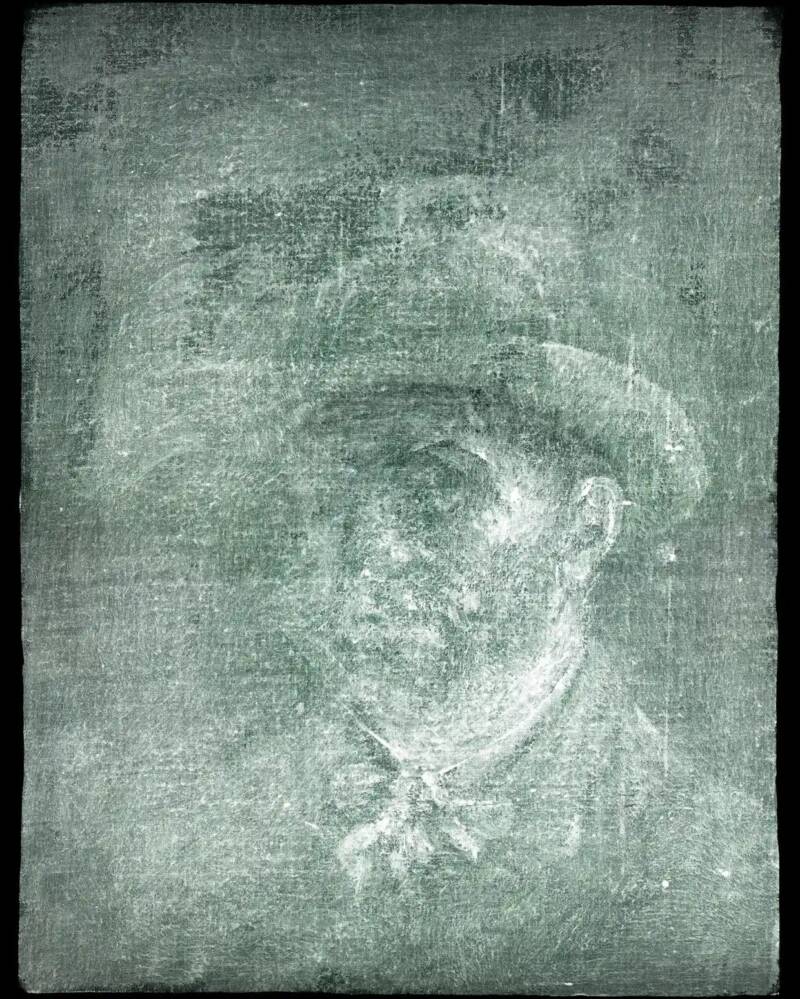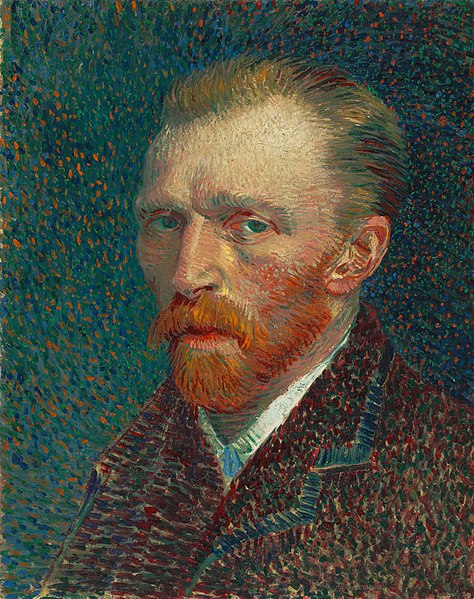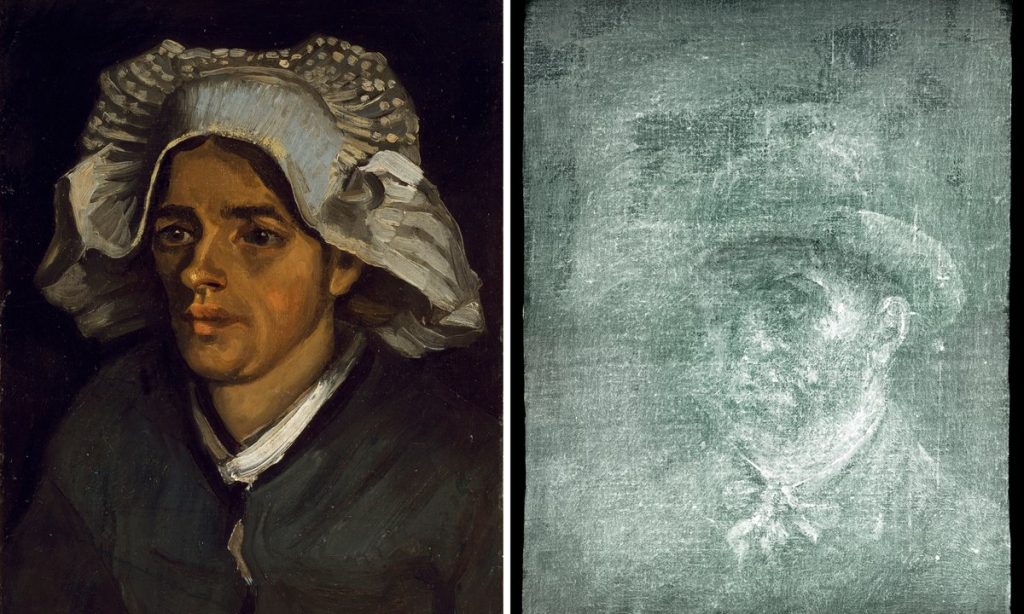Introduction
Vincent van Gogh, a Dutch post-impressionist painter, is renowned for his unique artistic style and emotionally charged artworks. Among his vast collection, Vincent van Gogh’s self-portraits hold a special place, providing a window into the artist’s inner world. In this article, we will explore the significance of Vincent van Gogh’s self-portraits, delve into his artistic evolution, and unravel the emotions and messages behind his introspective masterpieces.
Hidden Vincent van Gogh Self Portrait Discovered by X-ray
When the conservators at the National Galleries of Scotland initiated a regular X-ray examination of Vincent van Gogh’s artwork titled “Head of a Peasant Woman,” their expectations were modest. However, to their sheer delight, they stumbled upon an overlooked self-portrait by Van Gogh on the reverse side of the canvas.
In an announcement to Al-Jazeera, Professor Frances Fowle, the senior curator of French art at the National Galleries of Scotland, exclaimed, “We have stumbled upon an unknown masterpiece by Vincent van Gogh, one of the most revered and beloved artists globally.” Describing the discovery as “exceedingly rare,” she further remarked, “What an extraordinary gift for Scotland, one that will be under the perpetual care of the National Galleries.”
This remarkable find came about during the scrutiny of “Head of a Peasant Woman” as part of a comprehensive cataloging exercise, in preparation for an upcoming exhibition showcasing French impressionism, according to The Guardian. The painting had been generously donated to the museum in 1960 by an Edinburgh-based lawyer.

Lesley Stevenson, the senior paintings conservator at the National Galleries of Scotland, experienced an exhilarating moment as she examined the X-rays, coming face to face with the visage of Vincent van Gogh himself. “It was absolutely exhilarating,” she shared with The Guardian. “Lo and behold! We don’t see much of the peasant woman, but the X-ray revealed the lead white, a heavier pigment used for his face, showing through the cardboard.”
A press release from the National Galleries of Scotland eloquently described the “enticing discovery” as depicting “a bearded sitter in a brimmed hat with a neckerchief loosely tied at the throat.” The self-portrait fixated its viewer with an intense gaze, casting a shadow over the right side of the face, while the left ear remained clearly visible.
Vincent van Gogh, famously known for cutting off his left ear in 1888 after an altercation with fellow artist Paul Gauguin, was, as it turns out, an artist who judiciously reused canvases to save costs. Rather than painting over previous works, he utilized both sides of the canvas. In this particular instance, conservators speculate that’s exactly what happened.
However, it appears that around 1905, roughly 15 years after Van Gogh’s demise in 1890, and before he was widely recognized as one of art’s luminaries, the self-portrait on the back of “Head of a Peasant Woman” was concealed beneath cardboard due to its perceived incompleteness. The National Galleries of Scotland’s press release explained that during an exhibition at the Stedelijk Museum in Amsterdam, the decision was made to attach the canvas to cardboard before framing it, with the “Peasant Woman” being deemed more “finished” than the Vincent van Gogh self-portrait.

Ever since, the self-portrait has been veiled beneath layers of glue and cardboard.
“This is a momentous discovery as it adds to our existing knowledge of Van Gogh’s life,” remarked Stevenson, as reported by Al-Jazeera. “There is much to ponder regarding the next steps, but for us, it’s another valuable piece of the puzzle that brings us closer to the profound artist he was.”
The forthcoming steps would likely involve unveiling the Van Gogh self-portrait entirely. However, this task poses challenges, given that the artwork is currently enclosed in cardboard and glue. Revealing it without causing damage to either the self-portrait or “Head of a Peasant Woman” would be a delicate and intricate procedure.
Stevenson candidly conveyed her sentiments to The Guardian, saying, “It’s akin to stepping into the unknown. The real challenge will lie in carefully removing the adhesive from the oil paint layers, leveraging the contrasting solubility of animal-based glue and oil-based paint.”
In the meantime, the conservators have devised a brilliant solution. The previously undiscovered Van Gogh self-portrait will be put on display at the Royal Scottish Academy in Edinburgh from July 30 to November 13. Visitors will have the privilege of observing the painting through a specially-crafted lightbox, unveiling this captivating piece of artistic history.
The Evolution of Van Gogh’s Self-Portraits

Van Gogh’s self-portraits span over two decades, showcasing his evolution as an artist and his deepening introspection. From his early works in dark and somber tones to his later vibrant and expressive pieces, each self-portrait tells a unique story.
Vincent van Gogh Self Portraits as a Means of Self-Exploration
For Van Gogh, self-portraits were not merely a way to capture his likeness; they served as a means of self-exploration. Through each stroke of the brush, he delved deep into his psyche, seeking to understand himself and convey his innermost thoughts and feelings.
Mental State and Self-Reflection in Van Gogh’s Work
Van Gogh’s self-portraits offer glimpses into his mental state and the challenges he faced throughout his life. From moments of despair and loneliness to instances of hope and resilience, each self-portrait reflects the artist’s emotional journey and his relentless pursuit of self-expression.




Things i have observed in terms of computer system memory is always that there are specific features such as SDRAM, DDR and so on, that must match the specific features of the motherboard. If the personal computer’s motherboard is kind of current while there are no operating system issues, improving the memory literally takes under an hour. It’s among the easiest computer system upgrade methods one can think about. Thanks for spreading your ideas.
Nice post. I used to be checking continuously this blog and I am impressed! Very useful information particularly the remaining part 🙂 I deal with such information a lot. I was seeking this particular info for a very lengthy time. Thanks and good luck.
Thanks for your post. What I want to point out is that when looking for a good internet electronics go shopping, look for a web page with comprehensive information on important factors such as the personal privacy statement, basic safety details, payment guidelines, and also other terms and also policies. Generally take time to look into the help plus FAQ segments to get a far better idea of the way the shop functions, what they can perform for you, and the way you can maximize the features.
This webpage won’t show up appropriately on my droid – you might wanna try and fix that